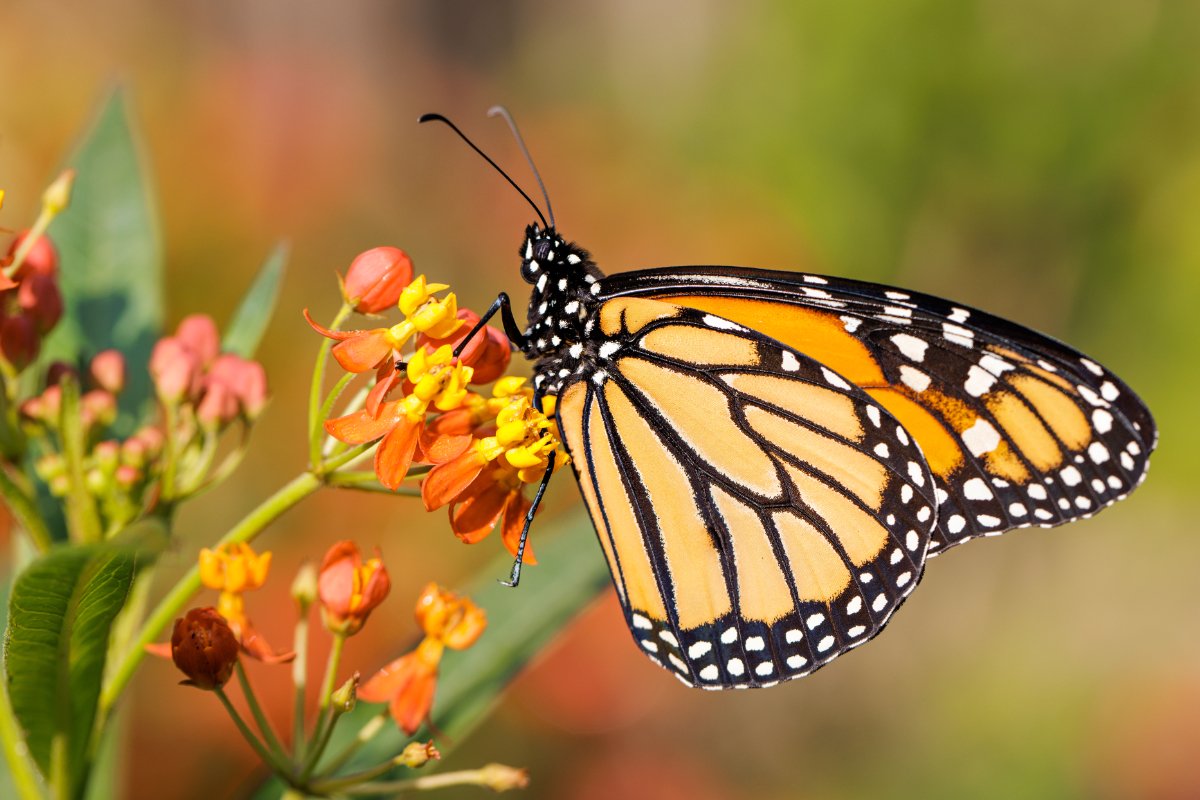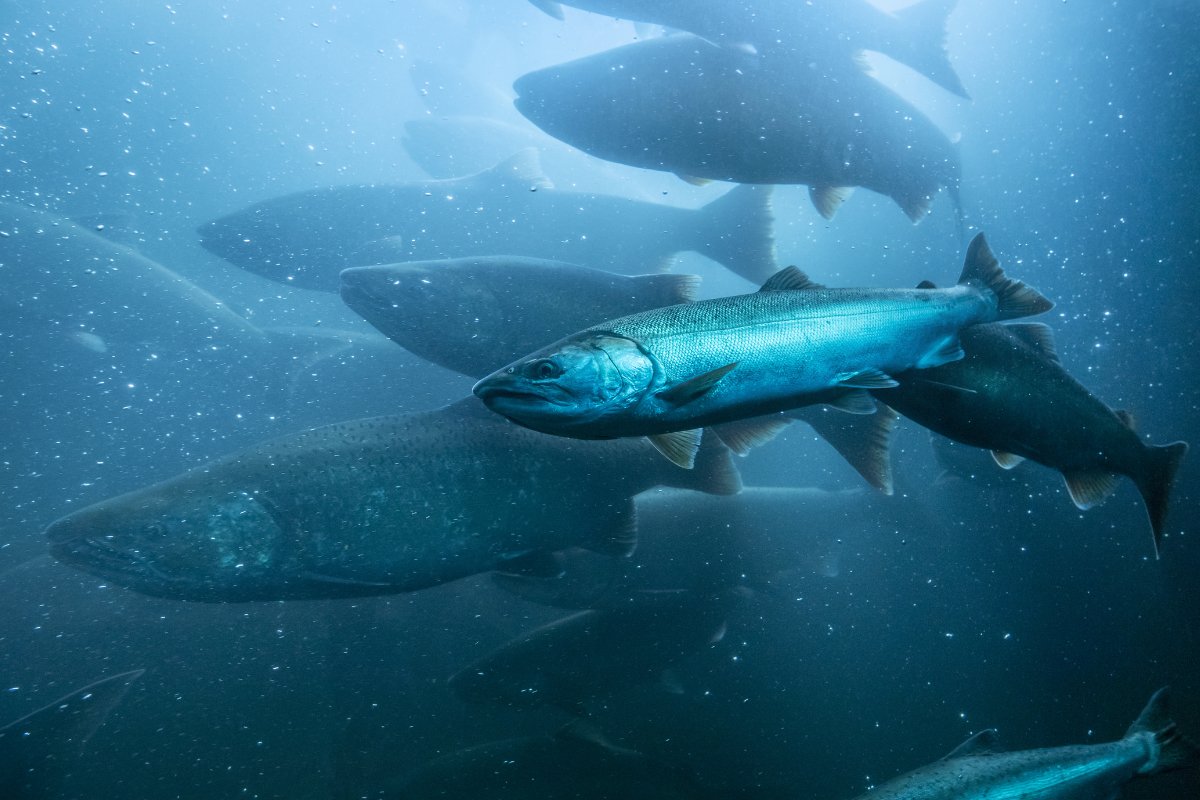Even as the Environmental Protection Agency moves to better regulate pesticides under the Endangered Species Act, the Trump administration is seeking to weaken habitat protections.

Even as the Environmental Protection Agency moves to better regulate pesticides under the Endangered Species Act, the Trump administration is seeking to weaken habitat protections.
May 7, 2025

A monarch butterfly on milkweed in Indiana. (Photo credit: Sue Zellers, Getty Images)
The Trump administration is proposing a significant change to one of the country’s most important—and contentious—environmental laws, which could give farmers more leeway to use pesticides without regard to their impact on critical habitats.
Expand your understanding of food systems as a Civil Eats member. Enjoy unlimited access to our groundbreaking reporting, engage with experts, and connect with a community of changemakers.
Already a member?
Login
In a proposed rule change announced on March 17, the U.S. Fish and Wildlife Service and the National Marine Fisheries Service want to change the way they interpret the Endangered Species Act (ESA), which they collectively administer, by rescinding the definition of “harm.”
“We are undertaking this change to adhere to the single, best meaning of the ESA,” the agencies say.
The U.S. Fish and Wildlife Service and the National Marine Fisheries Service want to change the way they interpret the Endangered Species Act (ESA) by rescinding the definition of “harm.”
Under the proposed rule change, habitat would not be protected, which could have huge consequences. It would open more of the United States to drilling, logging, and other industries. And it would represent a significant development for farmers, ranchers, and other food producers, affecting the ways they use land, make decisions about conservation, and treat crops. That’s especially true of pesticide use.
“Redefining ‘harm’ to not include habitat would really have a lot of impact,” said Nathan Donley, environmental health science director at the Center for Biological Diversity. “Pesticides are habitat-destroying chemicals. They kill plants. They destroy water quality and soil health. If you’ve ever driven through the rural Midwest, it quickly becomes apparent that that the only living things allowed to thrive there are corn and soy and wheat, and that’s brought to you by pesticides. So habitat and pesticides really go hand in hand.”
The move comes just a few years after the Environmental Protection Agency (EPA) finally began regulating pesticides’ impacts on endangered species and the habitats that support them—and after 50 years of the agency’s failure to address that responsibility under the ESA.
The Endangered Species Act prohibits the killing of protected species under the term “take.” Under the current law, that term means to “harass, harm, pursue, hunt, shoot, wound, kill, trap, capture or collect or to attempt to engage in any such conduct.”
The agencies say that there is a “well-established, centuries-old understanding” of the word “take”: to kill or capture a wild animal. But the agencies argue that federal regulations have since expanded the reach of the law, and the meaning of “harm,” to include habitat modification. The best reading of the statute would mean adhering to a stricter definition of “take” and “harm,” to exclude what they call “habitat modification.”
Conservation groups say that such an interpretation would impair a key feature of the law, habitat protection, because it is an essential part of the preservation of endangered or threatened species.

Wild salmon migrating upstream in the Columbia River, Oregon. (Photo credit: DaveAlan, Getty Images)
“I think it changes the equation, because it removes concerns about one of the biggest impacts to listed species, which is loss of habitat,” said Mike Leahy, senior director of wildlife, hunting, and fishing policy at the National Wildlife Federation. “So, in the grazing or ranching context, a rancher could allow cattle or sheep to destroy spawning grounds for salmon, to graze all over it and trample through it, and they wouldn’t have to worry about ‘take.’ They’re saying, ‘Well, my cattle are not actually stepping on the head of the fish, so they’re not actually killing any fish.’ And if harm to habitat doesn’t count as take, then they don’t have to worry about that.”
In their proposal, the agencies cite a 2024 decision by the Supreme Court that put less emphasis on agencies’ expertise—a legal doctrine called Chevron deference—and more emphasis on the reading of a statute. The agencies are arguing that the best reading of the Endangered Species Act should not include interpretations of harm to a species through habitat loss.
The Fish and Wildlife Service, which is under the Interior Department, and the National Marine Fisheries Service, which is under the Commerce Department, are the agencies in charge of implementing the Endangered Species Act. And while some of their decisions directly impact farmers and ranchers, often through the use of public land, they also influence the way the Environmental Protection Agency manages chemicals.
Like all federal agencies, the EPA has a legal obligation to adhere to the Endangered Species Act. That includes approving or reviewing the use of pesticides, herbicides, insecticides, rodenticides, and fungicides. Under a traditional reading of the Endangered Species Act, the EPA should protect against the loss of habitat, cover, or food sources for protected species, in consultation with Fish and Wildlife or National Marine Fisheries.
Essentially, the EPA ends up doing “homework” for those agencies during chemical registrations and reviews, said Hardy Kern, director of government relations at the American Bird Conservancy.
But the new rule raises questions about this process, Kern said. “If ‘harm’ no longer encompasses habitat, is EPA to consider pesticide impacts on habitat anymore? Do they only consider direct impacts to species (ingestion, direct exposure, etc.)?”
Kern also questioned whether, under the new interpretation, EPA would consider matters related to drift and runoff, or attempt to identify habitat impacts from chemicals, and if it does, whether the two agencies would also consider those impacts.
Conservation groups have long claimed that the EPA fails in its ESA obligations, leading to a raft of lawsuits. In 2002, for example, the Center for Biological Diversity sued the EPA, alleging it had not considered impacts to the California red-legged frog, a threatened species, during the registration review of 66 active pesticide ingredients. The EPA has faced similar lawsuits for protected species of salmon and trout, and many others.
Under the Biden administration, the EPA overhauled how it regulated thousands of chemicals, to streamline the process and to come into closer compliance with the ESA. The agency signed a legal agreement in 2023 and has been working with industries, conservation groups, and others to develop a process of “strategies” aimed at aligning its chemical reviews with the ESA and clearly communicating with people who use chemicals.
Conservationists and industrial groups alike are watching the proposed rule change, to understand whether a new reading of the Endangered Species Act would disrupt this process—across the federal government. If the rule goes through, said Donley at the Center for Biological Diversity, “quite a bit more agency actions are just not going to be analyzed at all under the Endangered Species Act.”
If habitat destruction is not an issue under the law, farmers may be less inclined to join conservation programs.
As of now, the EPA is still relying on a traditional interpretation of the law. On April 29, the EPA issued a major update intended to streamline the regulation of insecticides and curb their impacts on endangered species. The agency said it has a responsibility to ensure that pesticide registration doesn’t jeopardize protected species, “or result in the destruction or adverse modification of their designated critical habitats.”
EPA released a similar strategy for herbicides last August. In that strategy, habitat protection is even more central, since weedkillers tend to also kill plants that various species depend on.
Under the interpretation proposed by Fish and Wildlife, critical habitat would not be considered. Farm groups are watching to see whether that new interpretation will impact the EPA’s strategies and process going forward.
“It’s something we’re keeping close tabs on,” said Kyle Kunkler, senior director of government affairs for the American Soybean Association. “We don’t feel that these ESA strategies are where we want them to be yet. But the other thing is, we want to make sure that there isn’t going to be anything that overturns the apple cart as well, that would completely disrupt those processes. If there is some major, disruptive factor, some sort of rule-making, or something that comes along that could jeopardize that path that we’re on, that’s something that we’re going to have to really think long and hard about.”
EPA officials were not available for direct comment by press time.
Beyond the EPA, taking habitat loss out of the Endangered Species Act could have other implications. It could change the way species are protected on private land. An agricultural producer may be less inclined to enroll in government land conservation programs, which sometimes provide legal protections against accidentally killing endangered species.
The monarch butterfly, for example, is currently proposed as a threatened species under the Endangered Species Act, and agencies and others are looking for ways to incentivize farmers to protect milkweed on their properties, since it’s the only food source for monarchs. If habitat destruction is not an issue under the law, farmers may be less inclined to join conservation programs.
“For a pollinator like the monarch, that habitat is just really widespread, that’s part of the problem,” said Lekha Knuffman, a senior agriculture program specialist at the National Wildlife Federation. “So how does this play out in that scenario?”
Broadly speaking, she said, the proposed rule change “weakens or significantly narrows the ability of Fish and Wildlife Service to make ‘take’ determinations or require consultations of EPA, since habitat modification is a pretty significant portion of those determinations.”
The proposed rule change could have broad implications beyond habitat. Currently, both Fish and Wildlife and the National Marine Fisheries Service seek to prevent incidental acts of harm under the law—the striking of endangered birds by wind turbines, for example. But under the proposed change, the agencies say they want to interpret harm to require an “affirmative act” that is “directed immediately and intentionally against a particular animal.”
“Ninety-six percent of birds that live in North America eat bugs at some point in their life.”
That could mean the loss of legal protections for many species interwoven in ecological systems that often include farms, fields, and pastures—birds, especially.
“Ninety-six percent of birds that live in North America eat bugs at some point in their life,” Kern, at the American Bird Conservancy, said. “Most birds rear their chicks on bugs. They need them to fuel up during migration. Even birds like hummingbirds, which we think of as nectar eaters, feed their babies primarily spiders and small flies.”
A rule that changes the definition of harm might change the way federal agencies think about habitat, he said, but it also could change the way they think about the protection of other crucial elements of a species’ survival.
“That can include feeding, sheltering, and breeding,” he said. “So, we’re talking about more than just the places that birds and other species live, we’re talking about the actions that contribute to their survival. And if you talk to anybody, of course that should constitute harm.”
The public comment period for the rule change ends on May 19. Kern believes this is the moment for the public to speak up: “This is a fabulous opportunity for people to weigh in and say, ‘I stand up for the Endangered Species Act; I think that it is an important law, and I understand that habitat is just as important as direct attacks on individuals of a species.’”

July 30, 2025
From Oklahoma to D.C., a food activist works to ensure that communities can protect their food systems and their future.
Leave a Comment